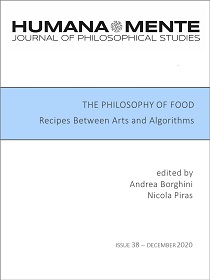Stefan Wiesner's Practice of Cooking. A Contribution to Culinary Aesthetics
Abstract
This contribution explores the aesthetic dimensions of culinary practice. Starting point is an investigation of the menu “The Elementary” by the Swiss avantgarde and Michelin-starred chef Stefan Wiesner. The methodological interweaving of phenomenology, speech act, pictorial, and design analysis points to an innovative cooking mindset which takes on shape in the menu “Elementary”: Wiesner renders nature experienceable with regard to taste in an essential manner. It is based on a concept of radical simplicity, which he calls “monotype”. “Monotype” mimicries neither existent nature nor conventional cooking styles. Rather, Wiesner sets out from very few elements which he then unfolds inwards taste-wise. The sequence of courses creates a spatio-temporal reference field that is inspired by nature but does not replicate it, instead it takes us through a culinary transformation of its elements. “Elementary”, so my argument, develops a new definition of the relationship between nature and food through a singular cooking practice out of which derives a desideratum for a culinary aesthetics.
Copyright (c) 2020 Nicolaj van der Meulen

This work is licensed under a Creative Commons Attribution-NonCommercial-NoDerivatives 4.0 International License.




